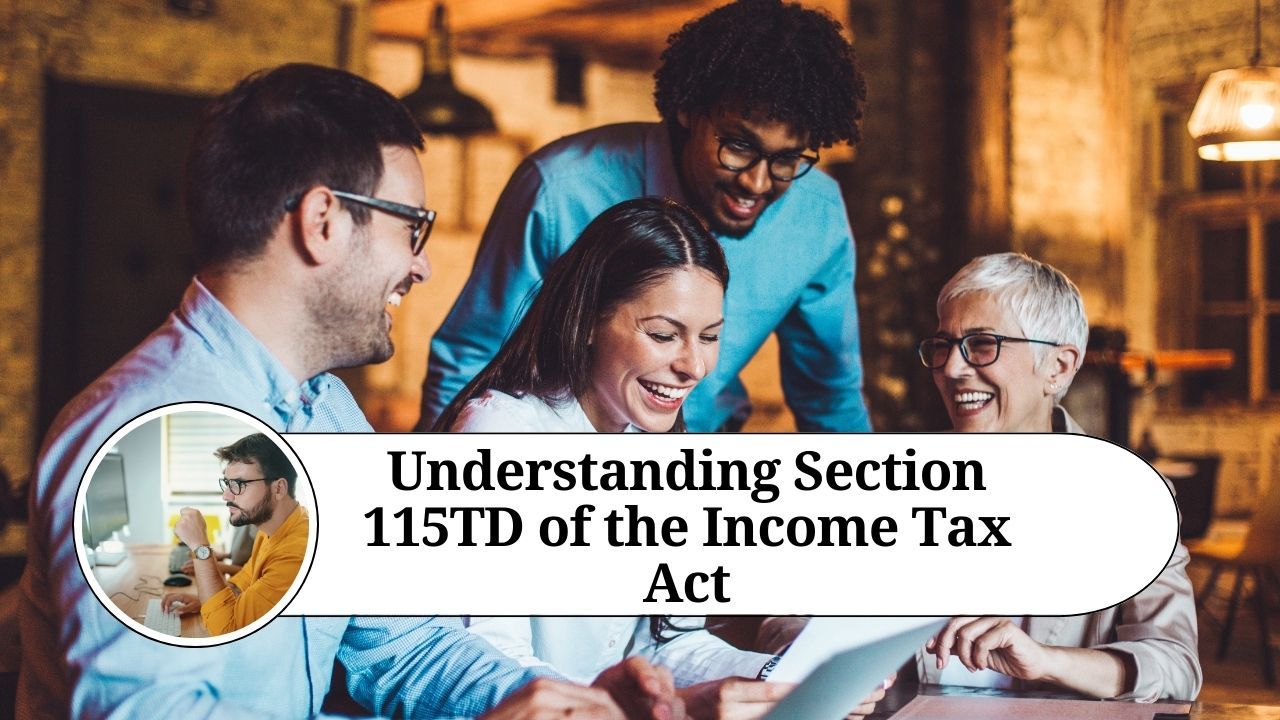115TD: Tax Implications for Charitable Institutions
- CA. Ali Asgar
·
2/29/2024

Charitable institutions play a pivotal role in society by addressing various social, educational, and healthcare needs. These organizations operate with a mission to serve the community and are often entitled to tax exemptions under the Income-tax Act. However, there have been instances where these institutions cease to exist or convert into non-charitable entities, raising questions about the handling of their assets and the tax implications involved. To address this, Section 115TD was introduced, providing clarity and imposing tax obligations in such scenarios.
The Foundation of Taxation on Charitable Institutions
Section 2(24) of the Income-tax Act defines "Income" inclusively, encompassing voluntary contributions received by charitable trusts, institutions, or funds. Sections 11 and 12 grant exemptions to these entities on income derived from property held under trust and voluntary contributions, subject to specific conditions. These conditions primarily require that the income should be applied for charitable purposes or accumulated and invested for such purposes within specified timelines. Section 12AA further regulates registration of these entities, while Section 13 outlines circumstances where exemptions may not be applicable.
The Need for Clarity and Regulation
Charitable organizations may wind up voluntarily, merge with other entities, or even convert into non-charitable forms. However, the absence of clear provisions in tax law raised concerns about the handling of their accumulated assets. There was a risk of misuse, where assets built over time through tax exemptions could be diverted to non-charitable purposes. Thus, there arose a necessity to ensure that the intended purpose of tax exemptions, i.e., furthering charitable objectives, remains intact even if the organization ceases to exist or transforms.
Introducing Section 115TD
To address these concerns, a new Chapter XII-EB was inserted into the Income-tax Act, comprising Sections 115TD, 115TE, and 115TF. Section 115TD specifically deals with the imposition of additional income tax in cases where a charitable organization converts into a non-charitable entity or merges with one. The key elements of this regime include:
- Taxation of Accreted Income: Upon conversion or merger with a non-charitable entity, the accretion in income (accreted income) of the trust or institution becomes taxable. This includes the aggregate Fair Market Value (FMV) of total assets reduced by liabilities on a specified date.
- Exclusions from Accreted Income: Certain assets acquired directly from agricultural income, or before registration under Section 12AA, may be excluded. Assets transferred to another charitable organization within a specified time are also exempt.
- Tax Rate and Payment: Accreted income is taxed at the maximum marginal rate and is in addition to any other income taxable in the entity's hands. The tax is final, with no credit available, and must be paid within a specified period.
- Interest on Late Payments: Failure to pay tax within the specified period incurs simple interest.
- Recovery and Liability: Principal officers, trustees, and the organization are deemed as defaulters in case of non-payment, with provisions for recovery. Recipients of trust assets, if not charitable organizations, also bear liability to the extent of assets received.
Conclusion
Section 115TD of the Income-tax Act fills a crucial gap by ensuring that tax benefits conferred upon charitable institutions are not misused during conversions or mergers. It establishes clear guidelines for taxation on accreted income, providing a safeguard against the diversion of charitable assets to non-charitable purposes. By imposing tax obligations in these scenarios, the law upholds the spirit of charitable giving and ensures that the community benefits from the intended purpose of these organizations even after their transformation.

© 2025 Capikar Technologies. All rights reserved